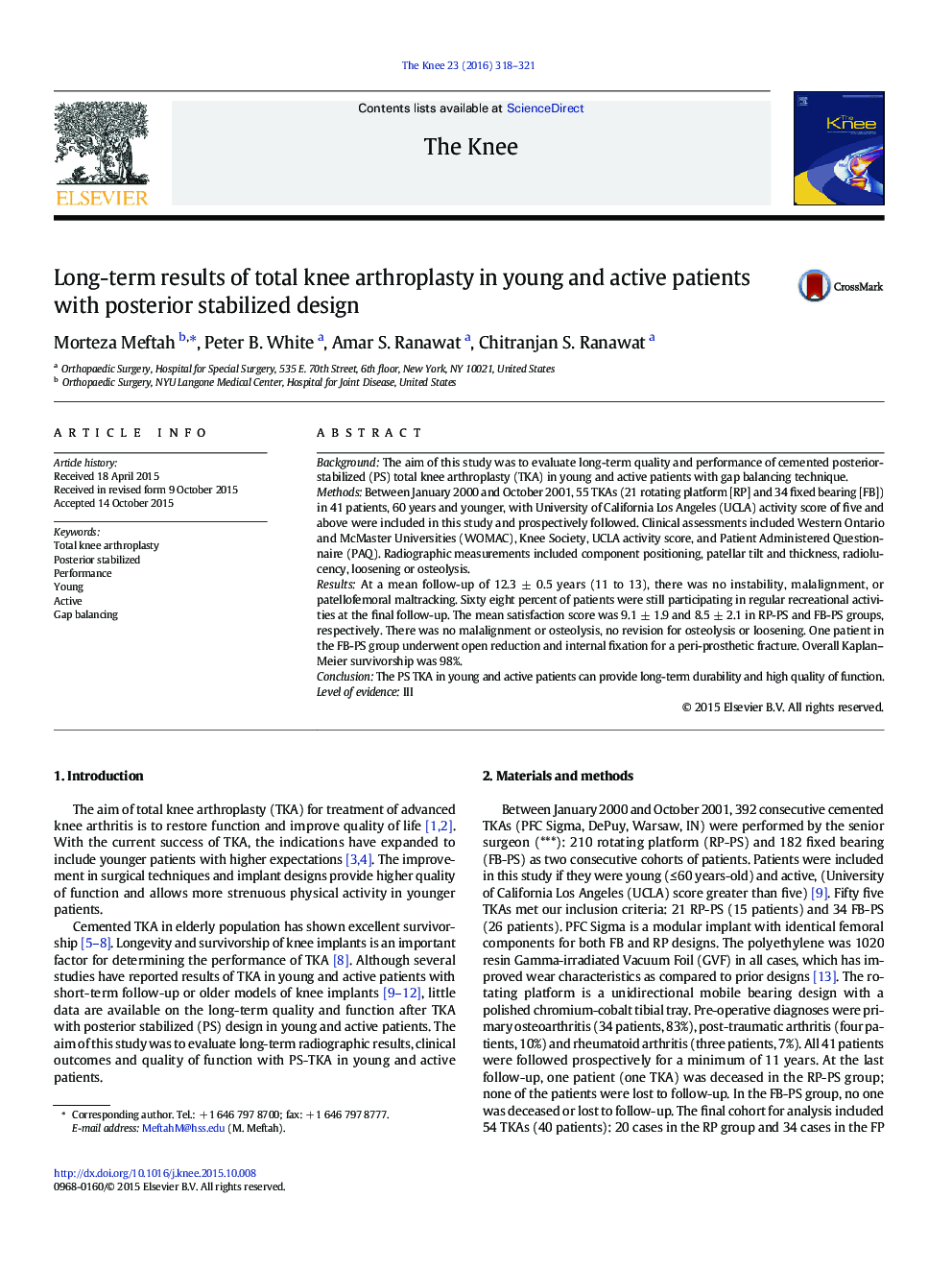| Article ID | Journal | Published Year | Pages | File Type |
|---|---|---|---|---|
| 4077300 | The Knee | 2016 | 4 Pages |
•We evaluated long-term performance of cemented PS TKA in young and active patients.•Results of 55 TKAs in patients ≤ 60 years, UCLA ≥ 5 at minimum 11 years were analyzed.•We found no instability, malalignment, or revision for osteolysis or loosening.•Proper gap balancing can provide long-term durability and high quality of function.
BackgroundThe aim of this study was to evaluate long-term quality and performance of cemented posterior-stabilized (PS) total knee arthroplasty (TKA) in young and active patients with gap balancing technique.MethodsBetween January 2000 and October 2001, 55 TKAs (21 rotating platform [RP] and 34 fixed bearing [FB]) in 41 patients, 60 years and younger, with University of California Los Angeles (UCLA) activity score of five and above were included in this study and prospectively followed. Clinical assessments included Western Ontario and McMaster Universities (WOMAC), Knee Society, UCLA activity score, and Patient Administered Questionnaire (PAQ). Radiographic measurements included component positioning, patellar tilt and thickness, radiolucency, loosening or osteolysis.ResultsAt a mean follow-up of 12.3 ± 0.5 years (11 to 13), there was no instability, malalignment, or patellofemoral maltracking. Sixty eight percent of patients were still participating in regular recreational activities at the final follow-up. The mean satisfaction score was 9.1 ± 1.9 and 8.5 ± 2.1 in RP-PS and FB-PS groups, respectively. There was no malalignment or osteolysis, no revision for osteolysis or loosening. One patient in the FB-PS group underwent open reduction and internal fixation for a peri-prosthetic fracture. Overall Kaplan–Meier survivorship was 98%.ConclusionThe PS TKA in young and active patients can provide long-term durability and high quality of function.Level of evidenceIII
